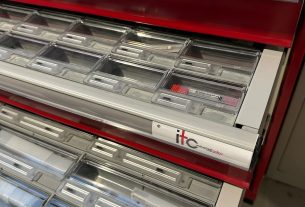The energy cost to run an electric motor over ten years is at least 30 times the original purchase price. With energy consumption responsible for the vast majority of whole life costs, Marek Lukaszczyk of motor and drive manufacturer, WEG, explains three ways to improve motor energy efficiency.
Straightforward motor upgrades
Many electric motors in use are either low efficiency or not properly sized for the application. Both issues result in motors working harder than they need to, using more energy in the process. Similarly, older motors may have been rewound a few times during maintenance, lessening their efficiency. In fact, it is estimated a motor loses one to two percent efficiency every time it is rewound.
Because energy consumption accounts for 96 per cent of the total life cycle cost of a motor, paying extra for a premium efficiency motor will result in return on investment over its lifespan.
But if the motor is working, and has been working for decades, is it worth the hassle of upgrading it? With the right motor supplier, the upgrade process isn’t disruptive. A pre-defined schedule ensures the motor exchange is carried out quickly and with minimal downtime. Opting for industry standard footprints helps to streamline this process, as factory layout will not need altering.
Motor performance sensors
To keep motors running optimally, plant managers can install retrofit sensors. With important metrics such as vibration and temperature monitored in real-time, built in predictive maintenance analytics will identify future problems ahead of failure.
With sensor-based applications, such as WEG Motor Scan, motor data is extracted and sent to a smartphone or tablet. Over in Brazil, one manufacturing plant implemented this technology on motors driving four identical air recirculating machines. When the maintenance team received an alert that one had higher vibration levels than the acceptable threshold, their heightened vigilance enabled them to solve the problem. Without this insight, unexpected factory shutdown could have arisen.
But where are the energy savings in the aforementioned scenario? Firstly, increased vibration is increased energy usage. Solid integrated feet on a motor and good mechanical stiffness is crucial to guarantee less vibration. By resolving the non-optimal performance rapidly, this wasted energy was kept to a minimum.
Secondly, by preventing a full factory shut down, the higher energy requirements to restart all machines was not required.
Use a variable speed drive (VSD)
Sometimes referred to as a variable frequency drive (VFD) or inverter drive, VSDs adjust the speed of an electric motor, based on the application requirements. Without this control, the system simply brakes when less force is required, expelling the wasted energy as heat. In a fan application for instance, VSDs reduce the airflow as per requirements, rather than simply cutting off the airflow while remaining at maximum capacity.
Combine a VSD with a super-premium efficiency motor and the reduced energy costs will speak for themselves. In cooling tower applications for example, using a W22 IE4 super premium motor with a CFW701 HVAC VSD, when properly sized, provides an energy cost reduction of up to 80 percent and average water savings of 22 per cent.
While the current regulation states that IE2 motors must be used with a VSD, this has been difficult to enforce across industry. This explains why the regulations are becoming stricter. As of July 1, 2021, three phase motors will need to meet IE3 standards, regardless of any VSD additions.
The 2021 changes are also holding VSDs to higher standards, assigning this product group IE ratings too. They will be expected to meet an IE2 standard, although an IE2 drive does not represent the equivalent efficiency of an IE2 motor — these are separate rating systems.
If you’re not happy to pay 30 times the motor price in energy bills over a decade, it’s time to make some of these changes. They won’t happen overnight, but a strategic plan that targets your most inefficient pain points will result in significant energy efficiency benefits.





